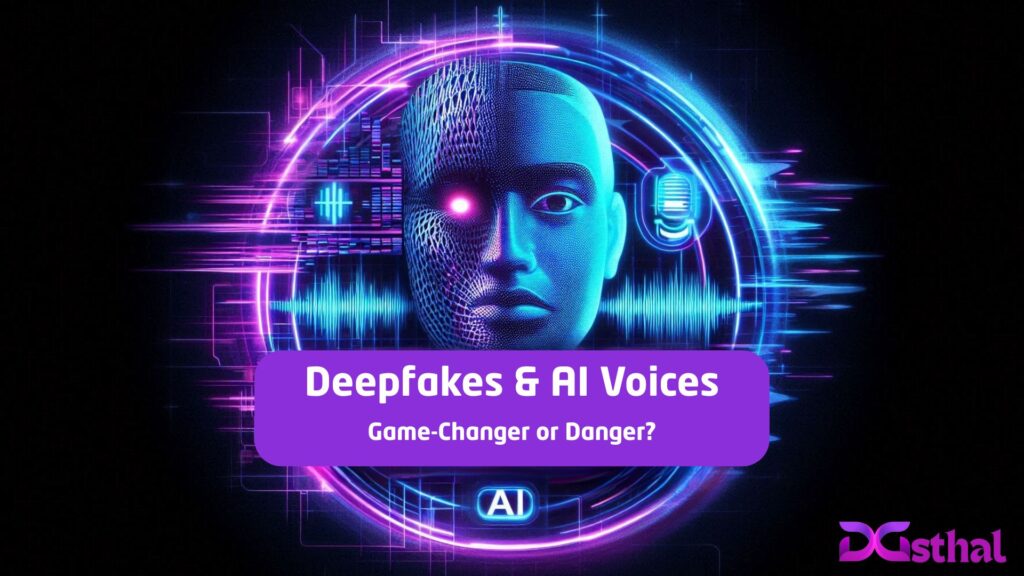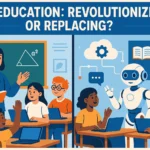Imagine this:
You’re watching a viral video where a celebrity says something outrageous — or you hear your favorite singer in a brand-new track —
But wait… they never actually said or sang that.
Welcome to the world of Voice Cloning and Deepfakes, where AI can copy voices, faces, and even personalities with stunning accuracy.
But before you panic and think we’re heading into a sci-fi nightmare, let’s take a breath and decode what this technology is really all about.

What is Voice Cloning?
Voice cloning is an AI-powered technology that mimics a person’s voice —
Yes, the same tone, accent, and quirks. All it takes is a few minutes of real audio, and machine learning does the rest.
When used ethically, it can be incredibly useful:
- Helping people who lost their voice (such as ALS patients)
- Narrating audiobooks in celebrity voices
- Personalizing virtual assistants for a better user experience
What Are Deepfakes?
Deepfakes use AI and deep learning to swap faces or voices in videos — often so flawlessly that you can’t tell it’s fake.
While they can be misused, deepfakes also offer exciting applications:
- Recreating late actors for films
- Dubbing foreign-language movies with perfect lip-sync
- Creating personalized avatars for education
- Enhancing gaming and virtual reality experiences
What Happens When AI Is Misused?
AI misuse is a real concern and can have serious consequences:
- Fake news or political propaganda
- Scam calls using cloned voices
- Defaming celebrities or individuals
- Tricking people for money or social influence
Legal Punishment in India
To combat misuse, countries like India are enforcing laws under the Information Technology Act (2000) and Privacy Laws.
If someone uses AI to clone voices or faces without permission:
- It is considered a cybercrime
- It violates a person’s right to privacy
Penalties may include:
- Fines of up to ₹1 lakh or more
- Imprisonment of up to 3 years or more
- Permanent bans from digital platforms
Misusing AI tools isn’t just unethical — it’s illegal.
How to Use Voice Cloning & Deepfakes Responsibly
Here are some important guidelines for safe and ethical use:
- Always get consent before using someone’s voice or face
- Avoid creating or sharing fake or misleading content
- Do not impersonate others, even as a joke
- Clearly label AI-generated media
- Never use it to deceive, harm, or emotionally manipulate anyone
- Report misuse on platforms like YouTube, Instagram, and X (Twitter)
Real-Life Benefits of This Technology
Used positively, AI voice cloning and deepfakes have meaningful applications:
- Healthcare: Restoring voices for patients with ALS or speech loss
- Entertainment: Digital concerts, AI-generated artists
- Accessibility: Assisting visually impaired users through voice
- Memorials: Reconstructing voices of lost loved ones for tribute videos
Embrace It, Don’t Erase It
Voice cloning and deepfakes are not the enemy — they are powerful tools.
Yes, they need clear boundaries and regulation. But when used responsibly, they can educate, entertain, and empower.
Let’s stop fearing the future. Let’s learn, adapt, and use AI to build a better one — together.



